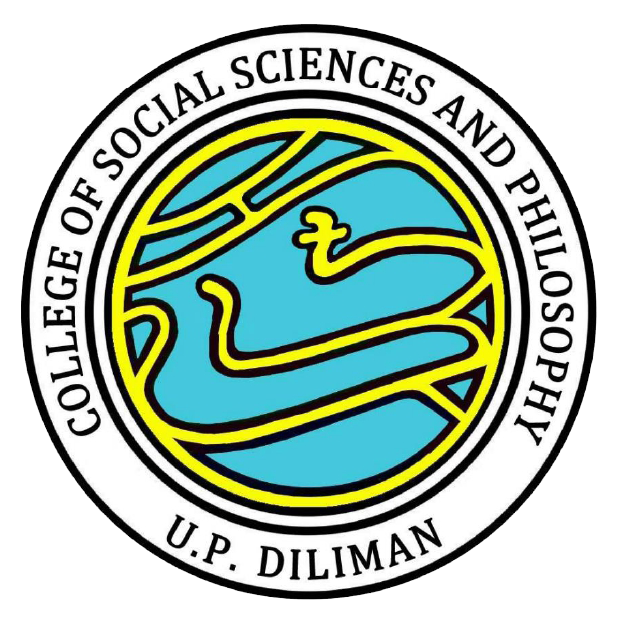Publications
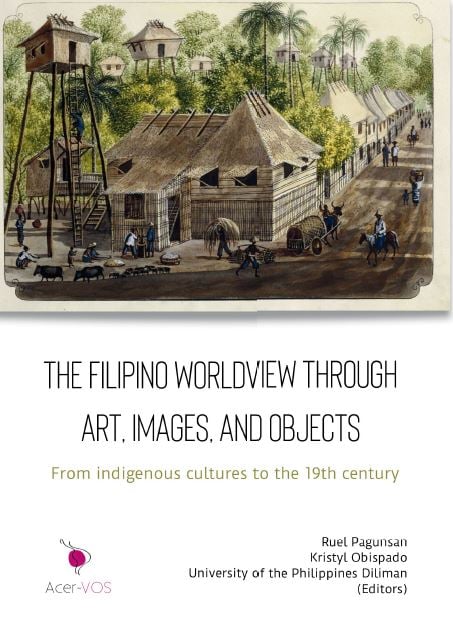
The Filipino worldview through art, images, and objects. From indigenous cultures to the 19th century
The volume is edited by Ruel Pagunsan and Kristyl Obispado of the Department of History. The book contributors are Ian Christopher B. Alfonso, Emmanuel Jayson V. Bolata, Shaunnah Ysabel Cledera, Rizalino Noble Malabed, Mary Josefti Nito, Jimmy Dillo Jr., Jay Rome De los Santos, Marjorie Almario-Magdadaro, Caroline Tacata-Tardibone, Kiko Del Rosario, Fernando Quiles, Phillip Lacson Medina, Cheek Fadriquela, and Ricardo Pinzón de la Cruz.
The chapters in this volume contribute to knowledge production by using interdisciplinary approaches, while reexamining key concepts such as indigenization, localization, hybridity, mestizaje, baroque, and the global. They interrogate the Philippines’ identity and its entanglements within Asia and broader global contexts through artistic representation. More importantly, the volume includes women and indigenous communities, highlighting their active participation and representation in the archipelago’s evolving visual and material culture.
The editors wish to extend their gratitude to the EnRedArs group at Universidad Pablo de Olavide, led by Dr. Fernando Quiles García; the UP Diliman Chancellor Edgardo Carlo Vistan II, the College of Social Sciences and Philosophy (CSSP) Dean Dr. Ruth Lusterio-Rico, former CSSP dean Dr. Maria Bernadette Abrera, and the UP Department of History’s Drs. Neil Martial Santillan and Rhodalyn Wani-Obias, for their invaluable support in making this book project possible.
The chapters in this volume contribute to knowledge production by using interdisciplinary approaches, while reexamining key concepts such as indigenization, localization, hybridity, mestizaje, baroque, and the global. They interrogate the Philippines’ identity and its entanglements within Asia and broader global contexts through artistic representation. More importantly, the volume includes women and indigenous communities, highlighting their active participation and representation in the archipelago’s evolving visual and material culture.
The editors wish to extend their gratitude to the EnRedArs group at Universidad Pablo de Olavide, led by Dr. Fernando Quiles García; the UP Diliman Chancellor Edgardo Carlo Vistan II, the College of Social Sciences and Philosophy (CSSP) Dean Dr. Ruth Lusterio-Rico, former CSSP dean Dr. Maria Bernadette Abrera, and the UP Department of History’s Drs. Neil Martial Santillan and Rhodalyn Wani-Obias, for their invaluable support in making this book project possible.

Marcos Lies (Revised Edition)
Marcos Lies is a compilation of thirty-one research essays that discuss in detail the various lies that the Marcoses have either concocted or have done nothing to stifle, lies that aided them in pursuit of power and plunder. This book shows how the lies were crafted, who enabled the Marcoses to foster their falsity on their targeted audience or those who knew the truth but have chosen to be silent. Each chapter gives details on how institutions and individuals were corrupted by the Marcoses to ensure that the lies they have made would not easily unravel. If corruption fails, the Marcoses of the martial law years have no qualms in resorting to censorship and the silencing of contrary and critical voices. During the martial law years, the Marcoses had at their disposal the whole state apparatus for propaganda, ensuring that a Marcos lie would not only remain valorized and unchallenged but that it would be repeated in all mediums and avenues used for the dissemination of state information. Their lies were then documented. To prove the lies, the authors have relied on documentary sources, much of which remains untapped, ranging from recently digitized records in the custody of the Presidential Commission on Good Government to the mountain of Marcos apologia produced by the National Media Production Center during the 1970s up to the 1980s. Many of these underutilized sources have been digitized and have long been made freely available online by their custodians. Without access to university resources during the pandemic, the authors revisited these online archives for news reports and diplomatic cables, transcript of congressional investigations, and various fragments of data that when put together offer a clear view of the truth that the Marcoses have either hidden or twisted. A disproportionate amount of recent studies have focused more on the utilization of deception to help the Marcoses reclaim Malacanang than on their deceptiveness during the rule of Marcos Sr. This is also, unavoidably, among the concerns of this book. But in the writing of the articles comprising this volume, after being similarly animated by the fact-checking ethos of those in the media, the authors’ tendency has been to ask, “How far does this lie go? And for whom was the lie made?”
The Revised Edition contains a new foreword by Shiela Coronel, index, and appendix section.
The Revised Edition contains a new foreword by Shiela Coronel, index, and appendix section.
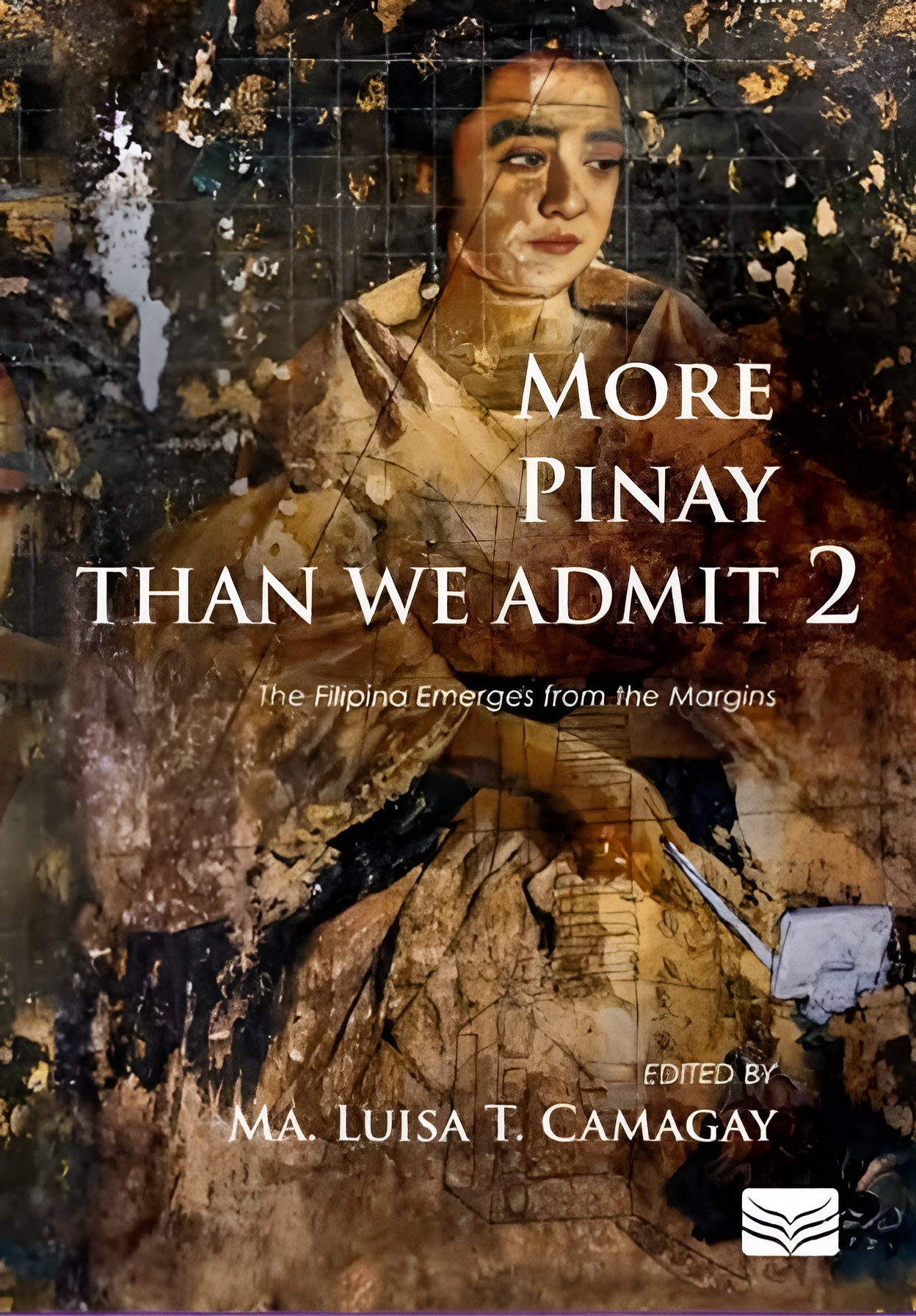
More Pinay Than We Admit 2: The Filipina Emerges from the Margins
More Pinay Than We Admit 2, edited by the esteemed Maria Luisa T. Camagay, explores the multifaceted roles of Filipino women during the Spanish, American, and contemporary eras of Philippine history. This collection explores the development of Filipino women over time, from how they were perceived and controlled to the ways they resisted and redefined their identities through time. Across 13 select essays, the book examines overlooked historical narratives, from the indigenous priestesses and spiritual leaders who were systematically stripped of authority under colonial rule, to the women who were the silent backbone of the Philippine Revolution, to the advocates for women’s suffrage who challenged social constraints and succeeded within a society shaped by an enduring legacy of colonialism, war, and inequality. Fourteen years after the release of the first volume, More Pinay than We Admit 2 continues to celebrate Filipino women and how across generations they have continually navigated, resisted, and reshaped themselves within and without the cultural and societal restrictions placed upon them.
About the cover: A rendition of Juan Luna’s La Bulaqueña by an unknown artist (Vibal Foundation). The “serene portrait” of a graceful young woman from Bulacan is reimagined with a selfie stick. Her eyes discreetly avoid the camera, and her slight smile captures a moment of self-expression that reflects the shifting roles of women in the Philippines, balancing tradition and modernity in an age of digital connectivity (Digitally enhanced by Francisco dC. Mendoza).
On the frontispiece: Top to bottom, Pura Villanueva, the first Filipina beauty queen who was crowned Queen of the Orient at the 1908 Manila Carnival (courtesy of Alex D. R. Castro); portrait of a native Filipina in Álbum de Filipinas (Biblioteca Nacional de España). Size: 6" x 9" Number of pages: 272 Available in Softbound and Hardbound Publisher: Vibal Foundation Inc. Imprint: Academica Filipina+
About the cover: A rendition of Juan Luna’s La Bulaqueña by an unknown artist (Vibal Foundation). The “serene portrait” of a graceful young woman from Bulacan is reimagined with a selfie stick. Her eyes discreetly avoid the camera, and her slight smile captures a moment of self-expression that reflects the shifting roles of women in the Philippines, balancing tradition and modernity in an age of digital connectivity (Digitally enhanced by Francisco dC. Mendoza).
On the frontispiece: Top to bottom, Pura Villanueva, the first Filipina beauty queen who was crowned Queen of the Orient at the 1908 Manila Carnival (courtesy of Alex D. R. Castro); portrait of a native Filipina in Álbum de Filipinas (Biblioteca Nacional de España). Size: 6" x 9" Number of pages: 272 Available in Softbound and Hardbound Publisher: Vibal Foundation Inc. Imprint: Academica Filipina+
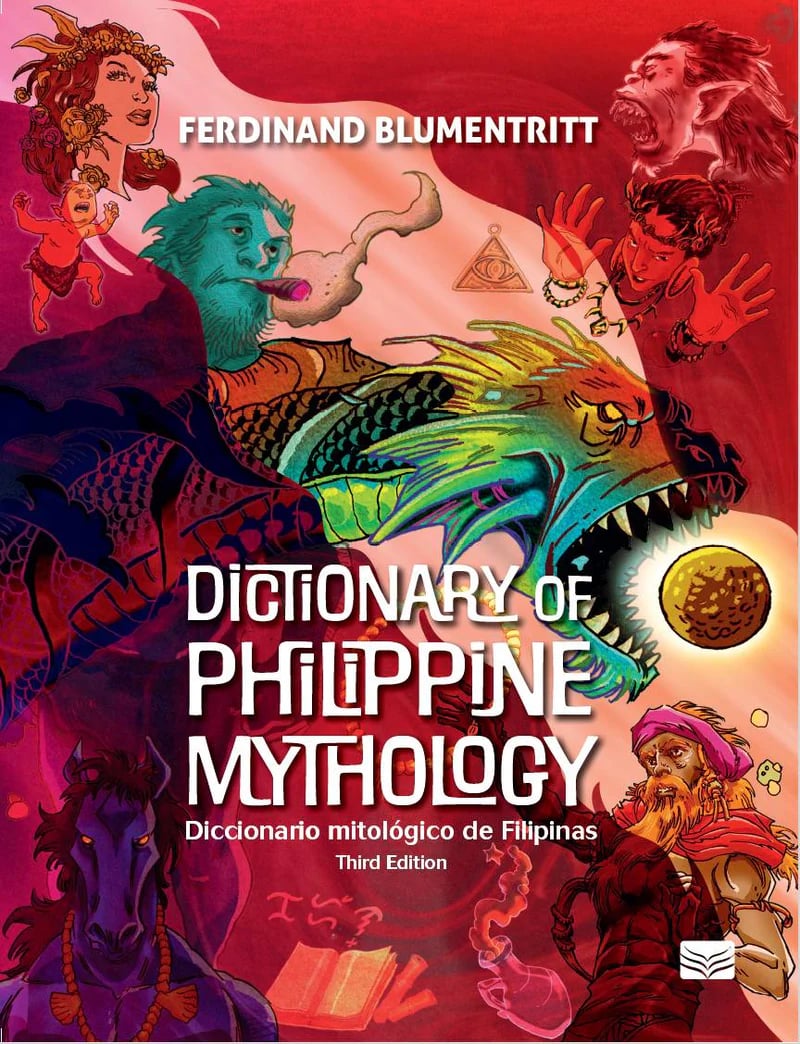
Dictionary of Philippine Mythology (Diccionario Mitológico de Filipinas)
Maria Bernadette L. Abrera, Ph.D.
Ferdinand Blumentritt’s Dictionary of Philippine Mythology is a landmark work that paved the way for the scholarly exploration of the mythological traditions of the Philippines. Originally published as Diccionario mitológico de Filipinas in 1895, this English-translated edition brings new life to one of the earliest and most comprehensive studies of the deities, spirits, and supernatural beings that inhabit the belief systems of the archipelago’s diverse ethnolinguistic groups.
A close confidant of José Rizal, Blumentritt approached Philippine mythology with the precision and depth of an anthropologist. The entries are carefully annotated, with sources ranging from ancient Spanish chronicles to Jesuit letters, offering differing perspectives on the other faces of Philippine culture that existed before the Spanish colonial grip was established. Blumentritt’s methodical work not only documents the gods and rituals of the indigenous peoples but also compares them with mythologies from Southeast Asia, Africa, Europe, and the Americas, making this dictionary a rich, cross-cultural study of animist traditions.
This edition preserves Blumentritt’s original insights, making it accessible to modern readers while enriching the experience with vivid illustrations of select creatures in Philippine mythology. More than a reference book, Dictionary of Philippine Mythology is an exploration of the world of ancient Filipinos, where the gods command the forces of nature, ancestral spirits guide mortals, and ancient rituals hold the power to alter fate.
A close confidant of José Rizal, Blumentritt approached Philippine mythology with the precision and depth of an anthropologist. The entries are carefully annotated, with sources ranging from ancient Spanish chronicles to Jesuit letters, offering differing perspectives on the other faces of Philippine culture that existed before the Spanish colonial grip was established. Blumentritt’s methodical work not only documents the gods and rituals of the indigenous peoples but also compares them with mythologies from Southeast Asia, Africa, Europe, and the Americas, making this dictionary a rich, cross-cultural study of animist traditions.
This edition preserves Blumentritt’s original insights, making it accessible to modern readers while enriching the experience with vivid illustrations of select creatures in Philippine mythology. More than a reference book, Dictionary of Philippine Mythology is an exploration of the world of ancient Filipinos, where the gods command the forces of nature, ancestral spirits guide mortals, and ancient rituals hold the power to alter fate.

A Visual Guide to Philippine Ancient History
Ancient Philippines comes to life in the engaging and colorful A Visual Guide to Philippine Ancient History. Sweeping in scope and enriched with vivid detail, the book discusses the formation and settlement of the Philippine archipelago, as well as the cultures, traditions, religious beliefs, and governmental structures of the early societies and communities that constituted what would eventually become the Philippine nation-state. Packed with photos, illustrations, fun infographics, and entertaining activities, A Visual Guide to Philippine Ancient History is the ultimate guide for history lovers of all ages to a long-vanished world that bequeathed many of the beliefs and institutions that continue to shape modern Philippine society.
CONTENTS
How It All Began: The Origin of the Philippine Archipelago and the First FilipinosMaritime Polity: Power and Social Relations in Ancient Philippines
Life of Our Ancestors: Beliefs, Customs, and Culture
Creative Hands, Ingenious Minds! Livelihood During the Ancient Times
Friendly Neighbors: Precolonial Trade in the Philippines
Answer Keys
Glossary
References
Index
Image Credits
Referencia
Copyright © 2024
200 pages; 20.955 cm x 26.67 cm
CONTENTS
How It All Began: The Origin of the Philippine Archipelago and the First FilipinosMaritime Polity: Power and Social Relations in Ancient Philippines
Life of Our Ancestors: Beliefs, Customs, and Culture
Creative Hands, Ingenious Minds! Livelihood During the Ancient Times
Friendly Neighbors: Precolonial Trade in the Philippines
Answer Keys
Glossary
References
Index
Image Credits
Referencia
Copyright © 2024
200 pages; 20.955 cm x 26.67 cm
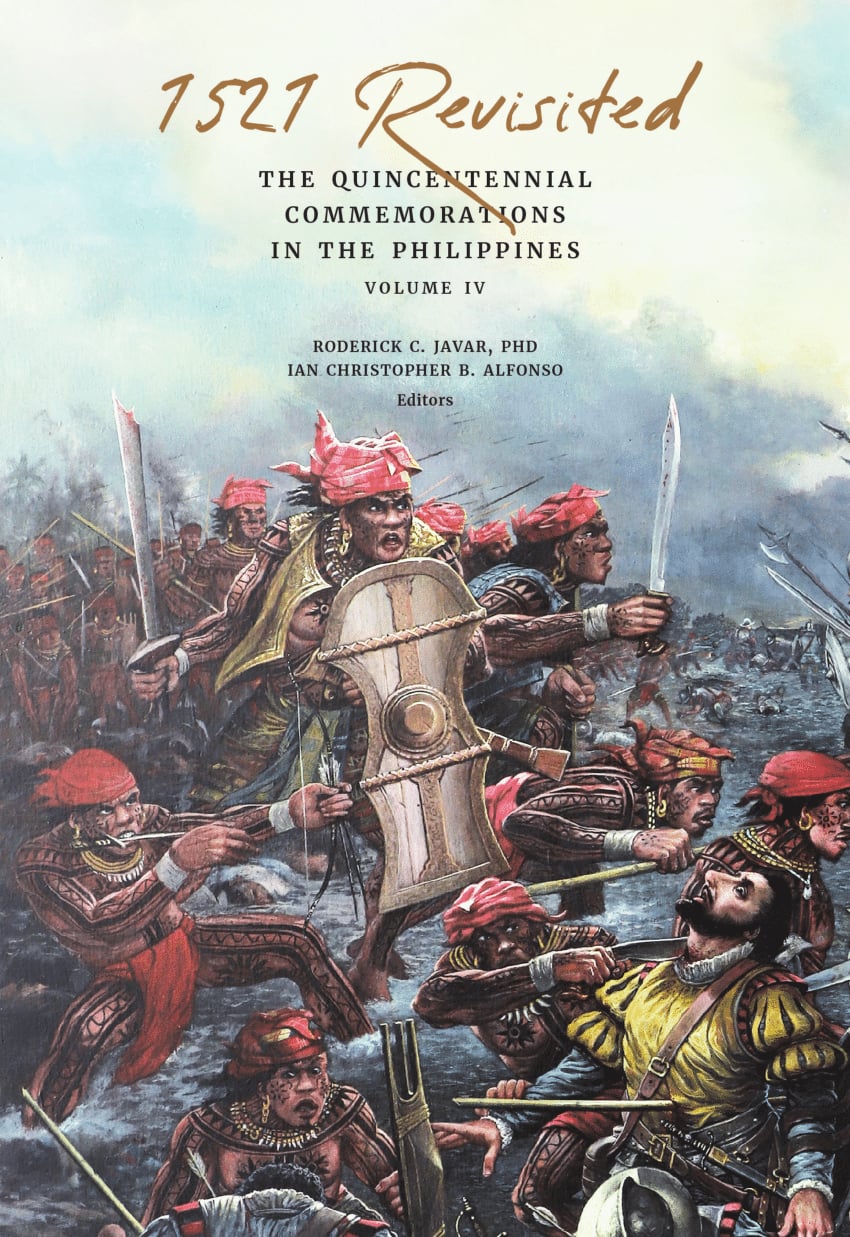
1521 Revisited: The Quincentennial Commemorations in the Philippines, Volume 4
This volume focuses on the vulnerability and, at the same time, immunity of our place names through time. The 2021 Quincentennial Commemorations in the Philippines provided a platform to assert our ancestors’ voices and agencies embedded in the place names we inherited.
Paperback / Softbound
Dimension: 5.5 x 8 in.
Weight: 0.43 kg
ISBN: 978-971-538-377-6
Paperback / Softbound
Dimension: 5.5 x 8 in.
Weight: 0.43 kg
ISBN: 978-971-538-377-6

Traditional Medicine in the Colonial Philippines, 16th to the 19th Century, Revised Edition (2024)
From the seventeenth to the nineteenth century, Spanish missionaries collected, studied, and made records of Philippine medicinal plants and herbs that Filipino traditional medical practitioners or herbolarios had been prescribing since the precolonial period. Because the herbolarios left no writings about their practices, the missionaries’ works are our primary sources for studying Filipino traditional medicine. Based on these works, Traditional Medicine in the Colonial Philippines gives an intimate and dense portrait of a defined medical tradition, and so, documents an important component of ways of life and epistemologies that Filipinos can recuperate and benefit from.
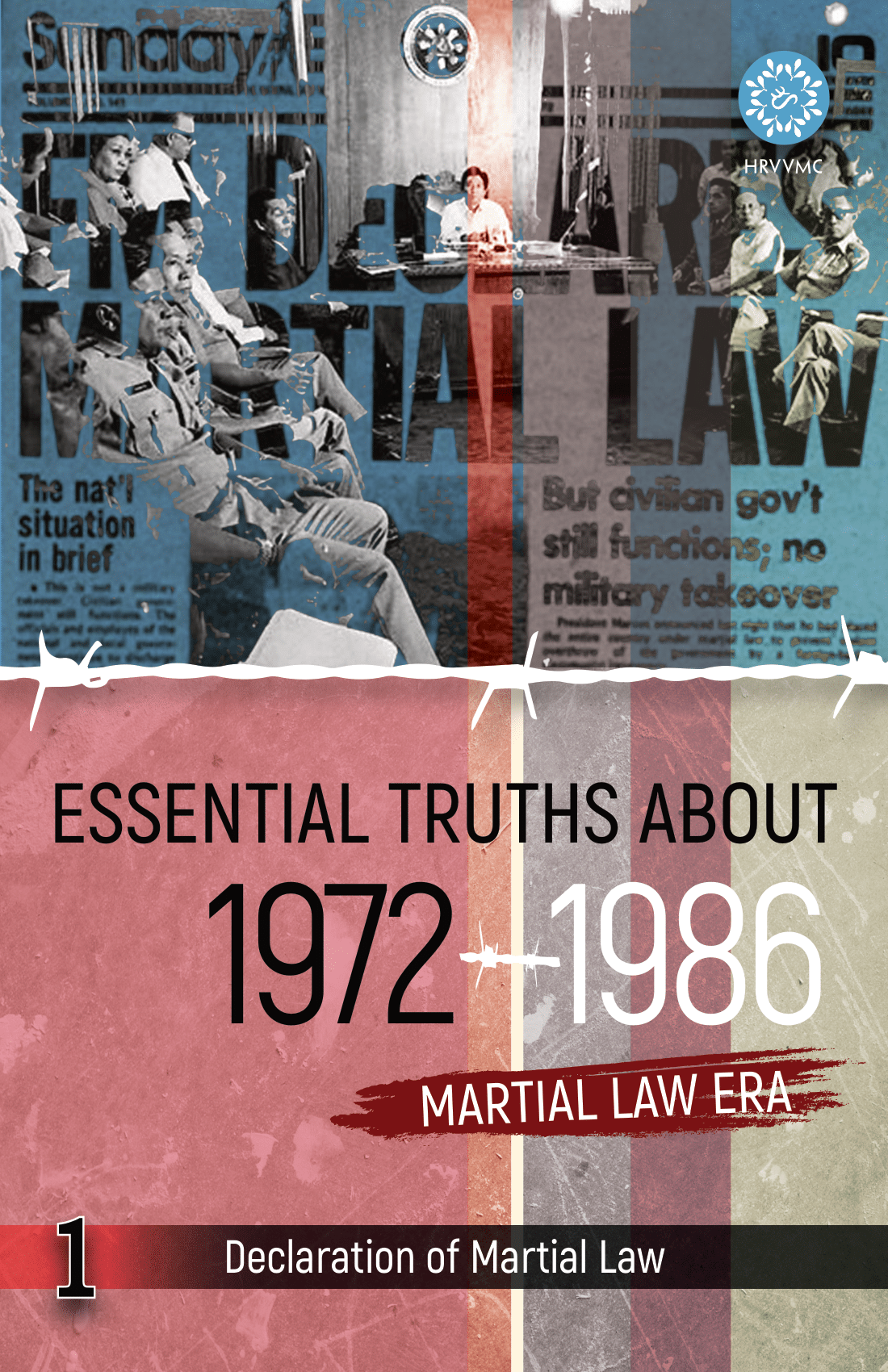
Essential Truths Series: Martial Law Era
The complete "Essential Truths" booklets are now available for download. Gain comprehensive knowledge about Ferdinand Marcos's Martial Law, and equip yourself with well-researched information to counter prevalent myths and misconceptions surrounding that era. This ten-part series focuses on the following aspects: Declaration of Martial Law (also available in Filipino), Economy (also available in Filipino),Human Rights, Institutions of Faith, Rule of Law, Corruption, Environment, Media, Protest Art and Culture, People Power.
Educators can utilize these booklets as a concise reference guide. Download all ten booklets for free at https://hrvvmc.gov.ph/hrvvmc-publications/. Physical copies will be available for distribution soon.
Educators can utilize these booklets as a concise reference guide. Download all ten booklets for free at https://hrvvmc.gov.ph/hrvvmc-publications/. Physical copies will be available for distribution soon.
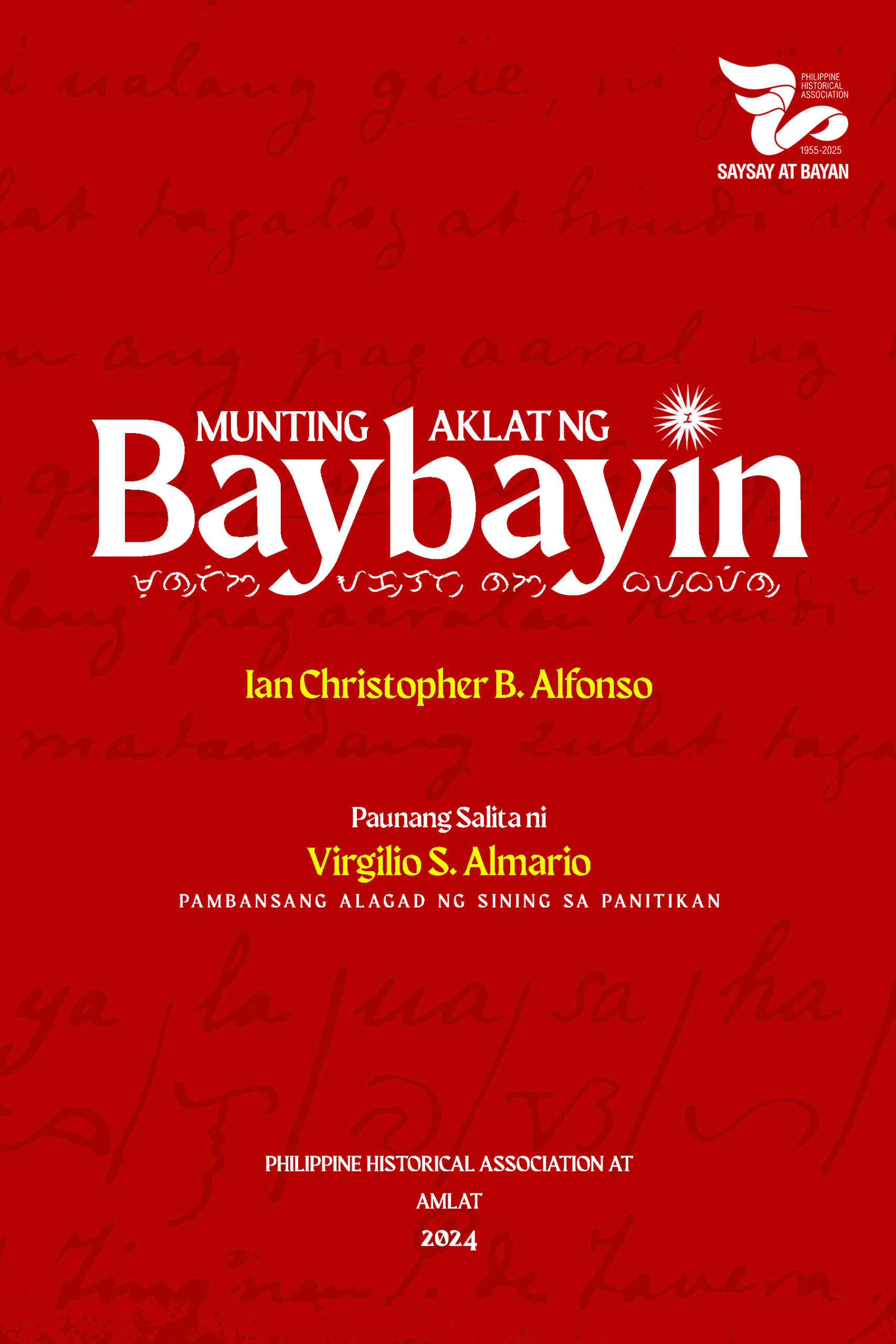
Munting Aklat ng Baybayin
Ian Christopher B. Alfonso's Munting Aklat ng Baybayin is a full colored book about the ancient Philippine writing system called Baybayin. It tackles the issues and concerns regarding Baybayin's popularization in contemporary Philippine society. It is also a guidebook on how to familiarize and write in Baybayin with Doctrina Cristiana (1593) as the baseline, although accommodating widely accepted practices such as the use of the vowel killer. National Artist for Literature Virgilio S. Almario wrote the foreword and published by the Philippine Historical Association and Amlat.
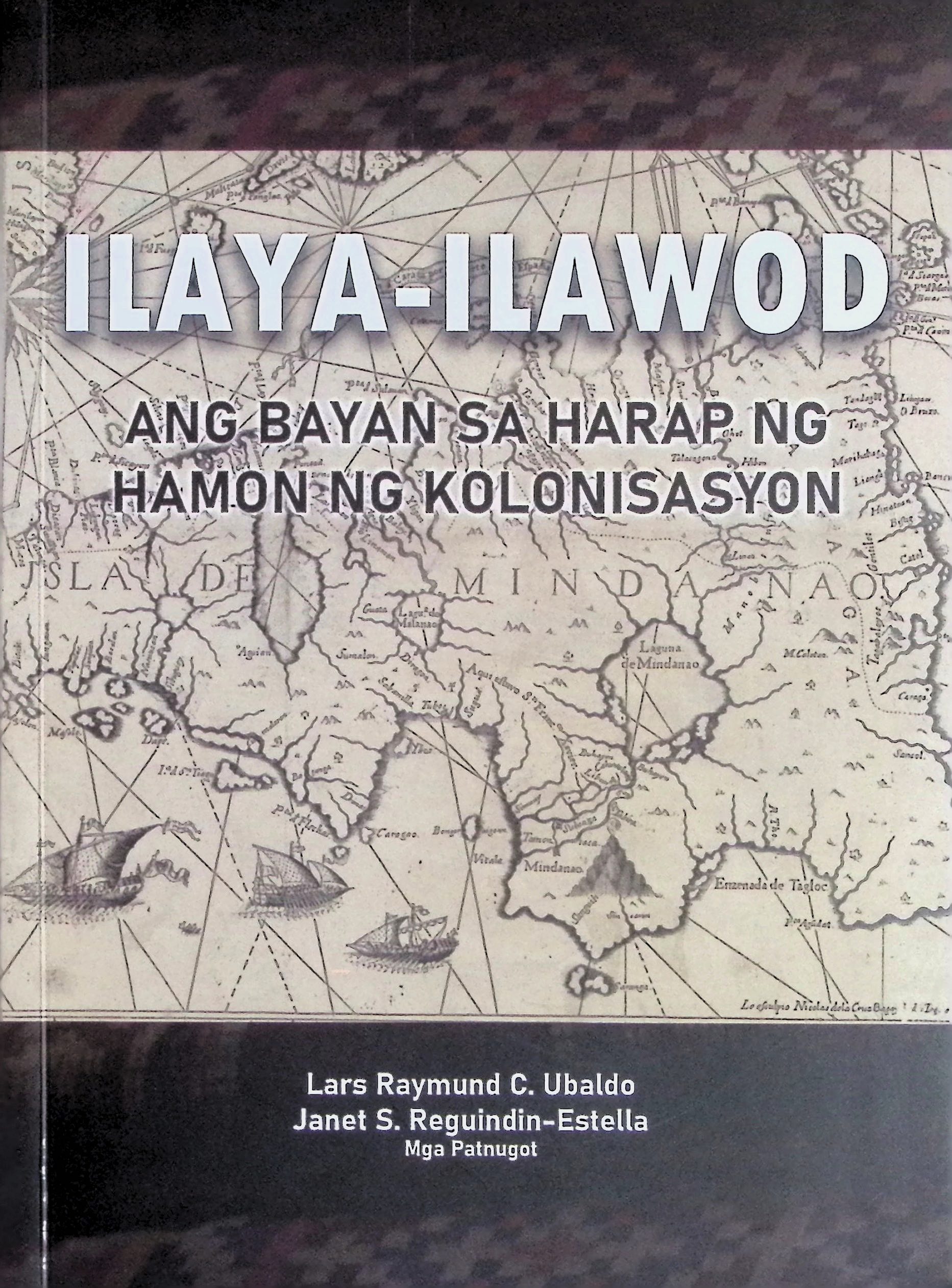
Ilaya-Ilawod: Ang Bayan sa Harap ng Hamon ng Kolonisasyon
Mauugat sa mahabang kasaysayan ng Pilipinas ang konsepto ng ilaya at ilawod kung saan nagaganap ang ugnayan ng mga komunidad mula pa sa sinaunang pamayanan. Pangunahing naging ugnayan ng ilaya at ilawod ang pagpapalitan ng produkto ayon sa kabuhayang angkop sa magkaibang sistemang pang-ekolohiya. Ang katangian ng mga pamayanan batay sa heograpikal at ekonomikal na ugnayan ay maaaring suriin upang maunawaan ang kasaysayan ng baybay-dagat at interyor sa pamayanang Pilipino na siyang dinatnan ng mga mananakop. Papaano nga ba binago ng kolonyalismo ang kaayusan ng mga pamayanan dulot ng kanilang pananakop? Anu-ano ang mga salik na nakaapekto sa ugnayang pampulitika, pangkabuhayan, pangkalinangan at pangkapaligiran sa panahong kolonyal? Sinasagot ng mga pananaliksik ang mga nasabing katanungan sa pamamagitan ng paglalatag sa naging kaayusan ng bayan sa hamon ng kolonisasyon.
| Title | Faculty Involved | Year |
|---|---|---|
| The Filipino worldview through art, images, and objects. From indigenous cultures to the 19th century | Ruel V. Pagunsan, Ph.D., Kristyl N. Obispado, Ph.D. | 2025 |
| Marcos Lies (Revised Edition) | Larah Vinda B. Del Mundo | 2025 |
| More Pinay Than We Admit 2: The Filipina Emerges from the Margins | Ma. Luisa T. Camagay, Ph.D. | 2025 |
| Dictionary of Philippine Mythology (Diccionario Mitológico de Filipinas) | Maria Bernadette L. Abrera, Ph.D. | 2025 |
| A Visual Guide to Philippine Ancient History | Vicente C. Villan, Ph.D. | 2025 |
| 1521 Revisited: The Quincentennial Commemorations in the Philippines, Volume 4 | Ian Christopher B. Alfonso, Ph.D. | 2025 |
| Traditional Medicine in the Colonial Philippines, 16th to the 19th Century, Revised Edition (2024) | Ma. Mercedes G. Planta, Ph.D. | 2025 |
| Essential Truths Series: Martial Law Era | Kristoffer R. Esquejo, Ph.D., Karl Friedrik K. Poblador, Ph.D., Janet S. Reguindin-Estella, Ph.D. | 2025 |
| Munting Aklat ng Baybayin | Ian Christopher B. Alfonso, Ph.D. | 2024 |
| Ilaya-Ilawod: Ang Bayan sa Harap ng Hamon ng Kolonisasyon | Janet S. Reguindin-Estella, Ph.D. | 2024 |
| AGOS: Currents of Faith in the Diocese of Kalookan | Kerby C. Alvarez, Ph.D. | 2024 |
| Pioneering Women’s Health: University of the Philippines – Philippine General Hospital Department of Obstetrics and Gynecology, 1900s-Present. | Ma. Mercedes G. Planta, Ph.D. | 2024 |
| Mga Sasakyang Pandagat ng Pilipinas - Picture Book | Maria Bernadette L. Abrera, Ph.D. | 2024 |
| Tahanan, Tanggulan, at TagpuanL Kasaysayang Pampook ng Bayan ng Looc | Kristoffer R. Esquejo, Ph.D. | 2024 |
| Kasaysayan Panlipunan ng Maynila, 1765-1898 | Ma. Luisa T. Camagay, Ph.D. | 2023 |
| Medal for Valor: Courage, Gallantry, and Heroism | Rowena Quinto-Bailon, Ph.D. | 2022 |
| Guerrilla Days in the Philippine South 1942-1945 | Ricardo T. Jose, Ph.D. | 2022 |
| Identity and Independence: Filipino Women in Times of War and Peace | Santillan, Neil Martial R., Emmanuel Jayson V. Bolata, Francisco Jayme Paolo A. Guiang, Magallona, Diego Vicente A., Francis Justine M. Malban, Dondy Pepito G. Ramos II, Aaron F. Viernes, Patrick James B. Serra | 2022 |
| Hindi Lang Basta Bata: Mga Pananaliksik at Panunuri sa Kasaysayan at Panitikang Pambata | Emmanuel Jayson V. Bolata | 2020 |
| Unraveling the Past: Readings in Philippine History | Ma. Luisa T. Camagay, Ph.D., Francisco Jayme Paolo A. Guiang, Francis Justine M. Malban, Dondy Pepito G. Ramos II | 2018 |
| Traditional Medicine in the Colonial Philippines: 16th to the 19th Century. Quezon City, Philippines: University of the Philippines Press. | Ma. Mercedes G. Planta, Ph.D. | 2017 |

